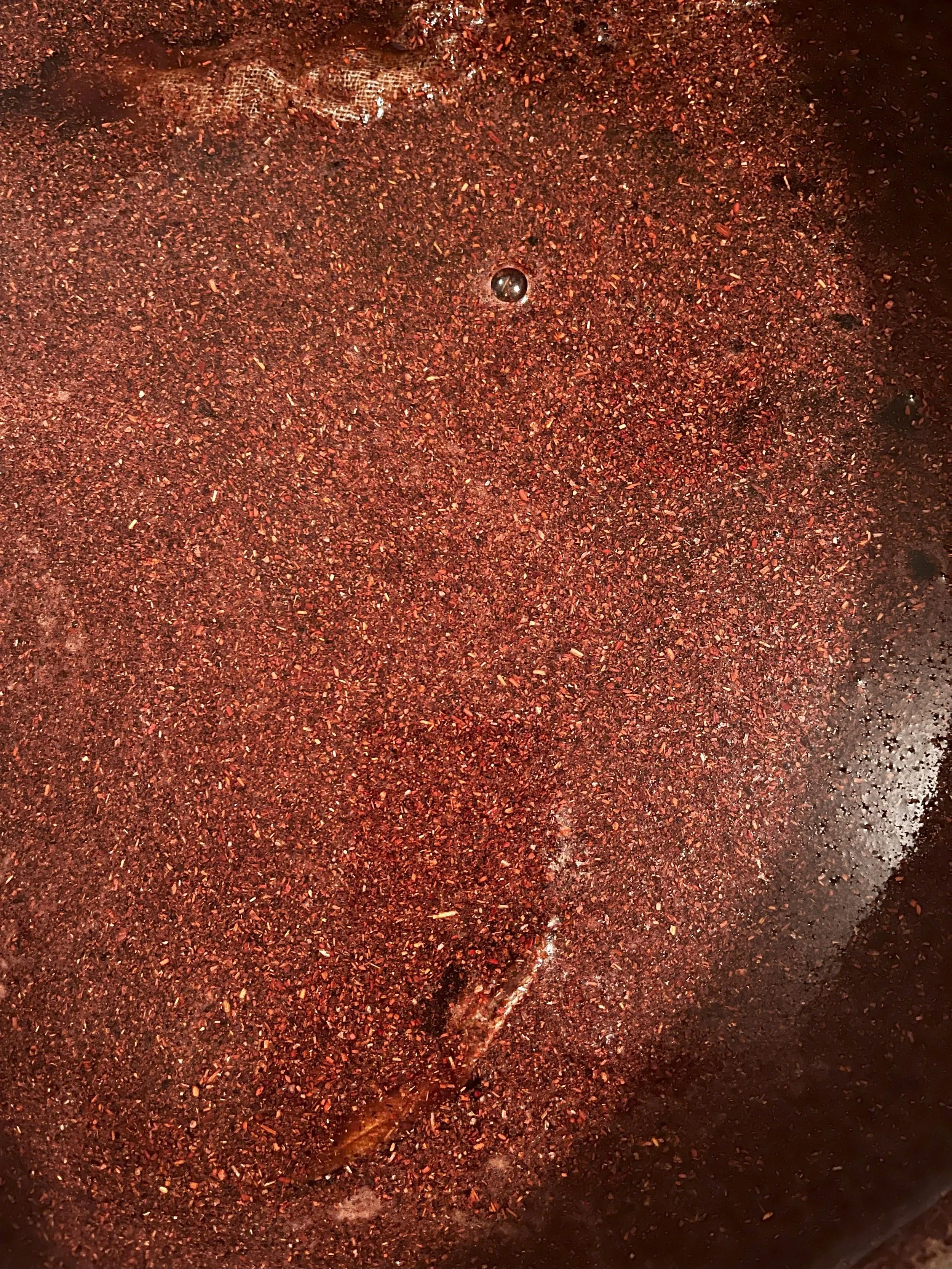The Making of a Madder Scarf
There is something deeply grounding about the colour red when it comes from the earth. Madder has a way of revealing warmth that feels ancient and familiar, a red that is not loud or glossy, but deep and alive.
When I prepare a dye pot with madder root, I feel as though I am stirring time itself. The water turns slowly from gold to rust to something between rose and clay. It smells faintly of soil and wood and something sweetly bitter, like the edge of autumn.
The first scarf I made in this dye bath became a magnificent, rusty red, rich and full-bodied, the colour of old brick warmed by the sun. The second, made with the same roots, is lighter, a gentle, earthy orange that feels as though light has entered it. Each piece carries its own mood, shaped by the day, the temperature, and the quiet decisions made along the way.
The cloth is a fine wool voil, light as breath, hand-stitched with simple shibori folds before it meets the dye. The stitched pattern is only revealed at the end, a kind of slow unwrapping, when the threads are loosened and the cloth opens again. It’s always a small moment of wonder.
I never tire of the way colour and cloth transform together. Every scarf feels like a story told in tone and texture, a conversation between fibre, hand, and root.
Two scarves from one pot: the first, deep red; the second, sun-warmed orange
Each piece I make teaches me something new about patience, colour, and the quiet rhythm of making by hand. The process of dyeing, stitching, and unfolding continues to shape the work I’m developing through Craft Spin Lab — small explorations in natural colour, texture, and the stories materials hold. I’ll be sharing more of these experiments soon — simple projects, thoughtful kits, and gentle workshops for those who want to make with their own hands and see where colour might take them.


